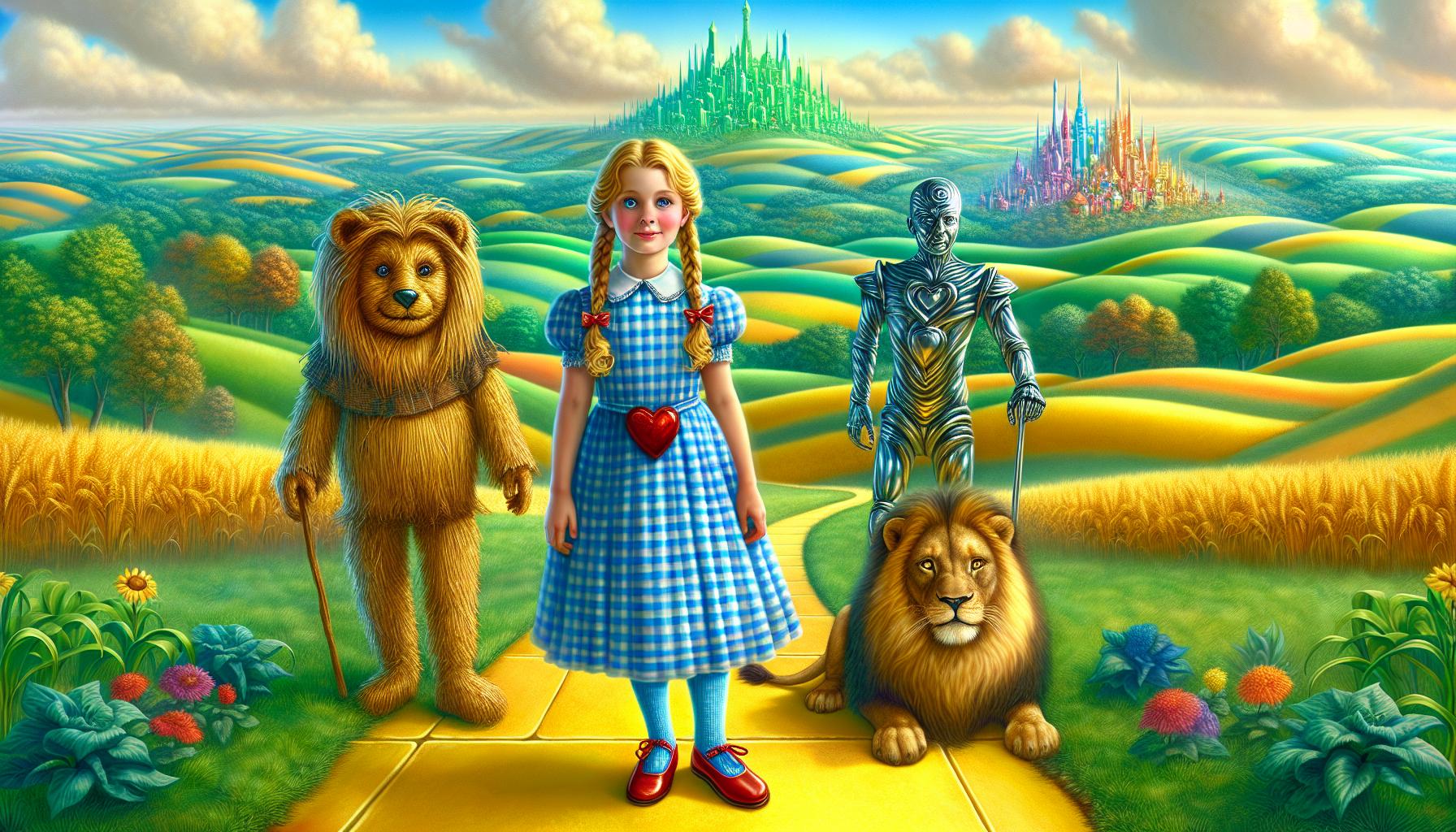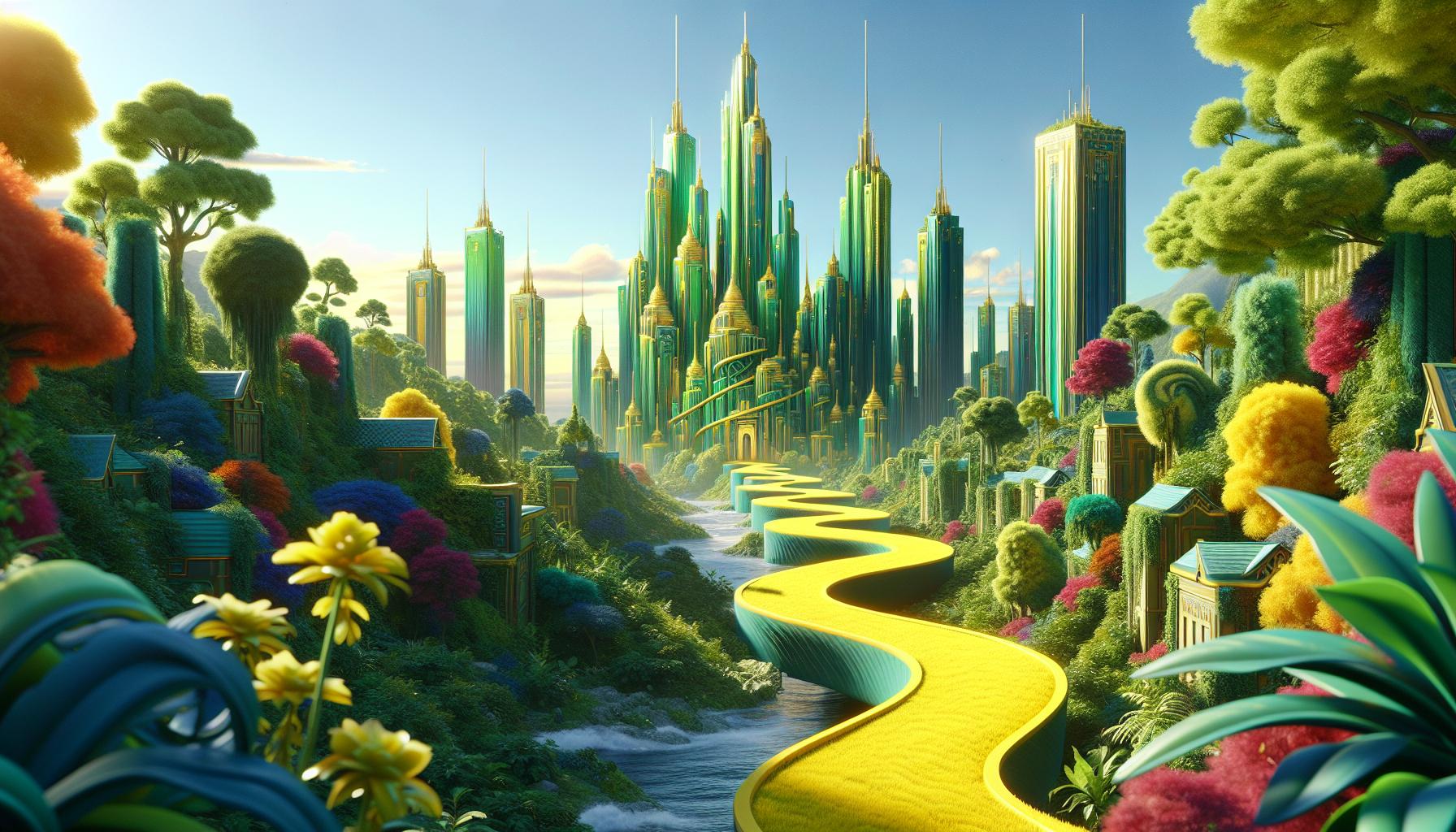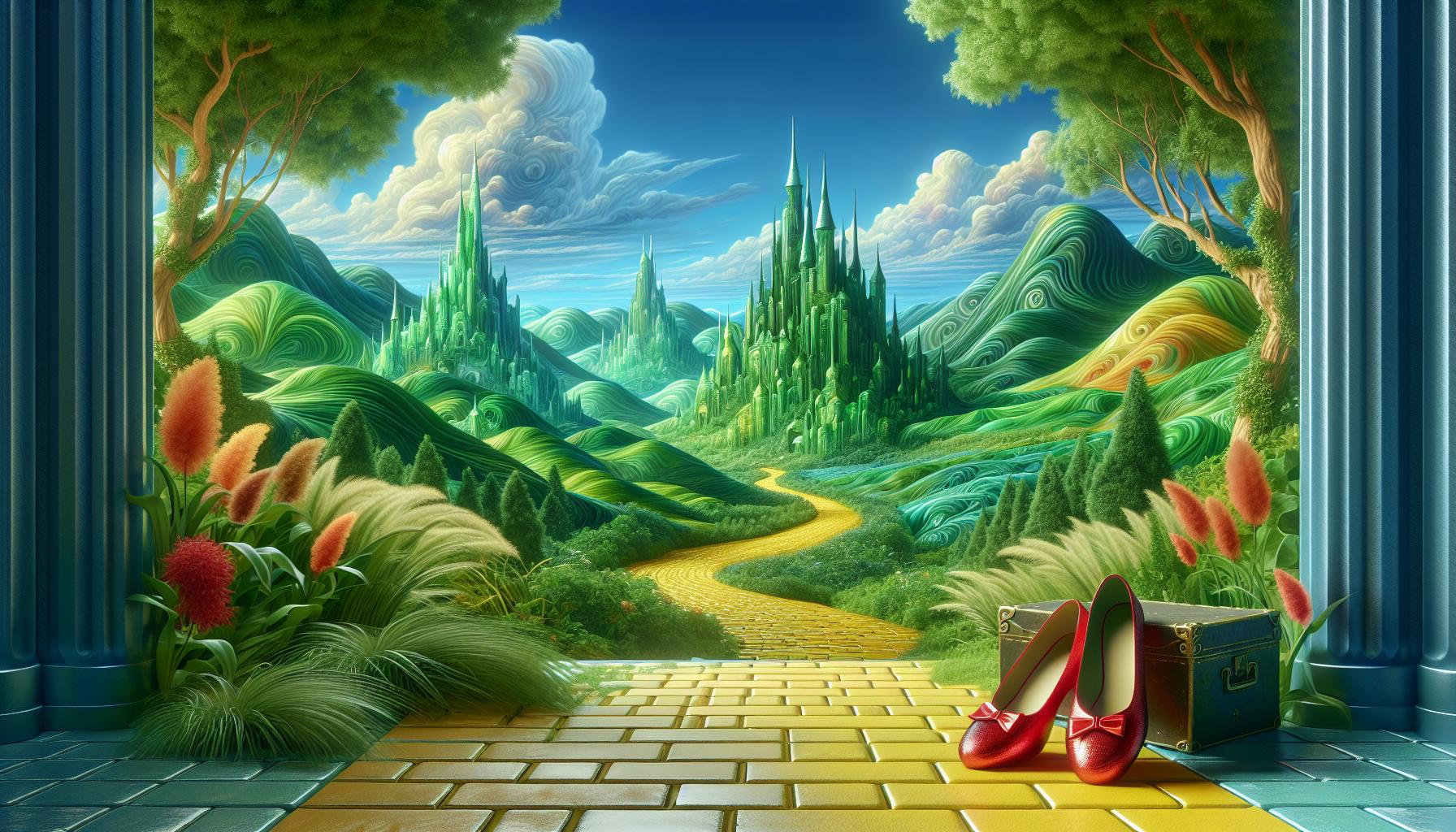The Wizard of Oz is a timeless classic that has enchanted audiences for generations, but is it really a Disney creation? Many might assume that this colorful journey down the yellow brick road is part of the Mouse House’s magical repertoire. After all, who wouldn’t want to believe that Disney has a hand in every whimsical tale?
Is The Wizard of Oz Disney
“The Wizard of Oz,” released in 1939, stands as an iconic American musical fantasy film. Directed by Victor Fleming, the movie adapts L. Frank Baum’s novel “The Wonderful Wizard of Oz.” It features Judy Garland in the lead role of Dorothy Gale, who dreams of escaping her Kansas home.
Colorful characters populate the Land of Oz. The Cowardly Lion, the Tin Man, and the Scarecrow join Dorothy on her journey to meet the Wizard. Each character represents distinct traits and desires, making their quest relatable.
Vibrant visuals define the film’s aesthetic. The transition from sepia-toned Kansas to the vibrant Technicolor of Oz captures viewers’ imaginations. Musical numbers such as “Over the Rainbow” contribute to the film’s legacy, earning it an Academy Award for Best Original Song.
Cultural significance surrounds “The Wizard of Oz.” The film has influenced various media, inspiring adaptations and parodies. Its themes of friendship, bravery, and self-discovery resonate through generations.
Critical acclaim persists for this classic. Film historians often cite “The Wizard of Oz” as one of the greatest films of all time. Its enduring popularity and powerful messages support its position in American cinema.
Despite its strong connection to magical storytelling, “The Wizard of Oz” is not a Disney production. Instead, it originated from Metro-Goldwyn-Mayer (MGM). This essential detail clarifies the misconception regarding its association with Disney.
“The Wizard of Oz” uniquely blends music, fantasy, and unforgettable characters. Its cultural impact solidifies its status as a timeless classic apart from Disney’s works.
The Wizard of Oz and Its Origins

“The Wizard of Oz” is a cultural phenomenon with roots in literature.
The Book by L. Frank Baum
L. Frank Baum published “The Wonderful Wizard of Oz” in 1900. This children’s book immediately gained popularity, captivating readers with its imaginative tale and unique characters. Baum’s visionary work introduced Dorothy, who longs to return home after being swept away by a tornado. The author crafted a narrative exploring themes of bravery, friendship, and self-discovery. Other characters include the Scarecrow, who desires a brain, the Tin Man seeking a heart, and the Cowardly Lion hoping for courage. Readers and scholars continue to appreciate Baum’s ability to create a fantasy world full of adventure and moral lessons.
The 1939 Film Adaptation
The iconic film adaptation premiered in 1939, directed by Victor Fleming, and featured Judy Garland as Dorothy. This beloved adaptation brought Baum’s literary work to life with vibrant Technicolor visuals. Audiences enjoyed the transition from the gray, sepia-toned Kansas to the colorful Land of Oz. The film introduced memorable musical numbers, including “Over the Rainbow,” which remains an anthem of hope and longing. Characters like the Wicked Witch of the West became ingrained in popular culture. “The Wizard of Oz,” despite being released over eight decades ago, retains its appeal and continues to inspire generations through its timeless themes and enchanting storytelling.
Disney’s Involvement with The Wizard of Oz

Disney’s association with “The Wizard of Oz” is primarily misunderstood. While the company is known for crafting enchanting tales, it did not create this iconic film. Instead, the 1939 classic was produced by Metro-Goldwyn-Mayer (MGM), which helped establish its legacy in American cinema.
Disney’s Early Works and Influence
Disney played a significant role in shaping the landscape of animated and fantasy films. Early successes like “Snow White and the Seven Dwarfs,” released in 1937, laid the foundation for the magic seen in later productions. Although “The Wizard of Oz” predates Disney’s full arrival in the live-action realm, its vibrant visuals and memorable music set a standard that influenced Disney’s storytelling approach. The recognizable characters and whimsical narratives that Disney later developed echo the charm of “The Wizard of Oz,” though they remain separate entities.
Misconceptions About Ownership
Many people mistakenly attribute “The Wizard of Oz” to Disney due to its enduring popularity and influence. Some may associate the film with Disney’s magical storytelling style, leading to confusion. MGM’s ownership of the film remains clear. Despite the close ties between “The Wizard of Oz” and Disney’s eventual blockbuster hits, the two originate from distinctly different sources within the film industry. Understanding this separation clears up the misconceptions about the film’s origins and celebrates MGM’s contribution to cinema.
Comparative Analysis

Analysis of “The Wizard of Oz” reveals both similarities and differences when compared to Disney films. Understanding these elements clarifies common misconceptions.
Similarities with Disney Films
Themes of friendship and bravery resonate in both “The Wizard of Oz” and classic Disney films. Magical elements frequently captivate audiences across these stories. Memorable characters like the Cowardly Lion and the Tin Man reflect the charm often found in Disney’s animated creations. Musical numbers enhance the emotional experience, similar to Disney’s iconic songs. Viewers often draw parallels between Dorothy’s journey and the adventures faced by Disney princesses. Visual storytelling engages audiences in both realms, creating a sense of wonder.
Differences from Disney’s Style
Darker undertones distinguish “The Wizard of Oz” from typical Disney productions. The film’s narrative includes direct moral lessons, contrasting with Disney’s often light-hearted approach. Character development in “The Wizard of Oz” includes deeper complexity, especially regarding themes of personal struggle. While Disney utilizes animation, this film relies on live-action, creating a different viewing experience. Production values reflect MGM’s unique strategy of lavish set designs, setting it apart from Disney’s animated stylization. Overall, “The Wizard of Oz” stands as its own entity, showcasing a distinct cinematic legacy.
Legacy and Cultural Impact
“The Wizard of Oz” has left an indelible mark on American culture since its release. Film scholars note the adaptation’s pioneering use of Technicolor, setting a new standard for visual storytelling in cinema. Iconic elements such as the Yellow Brick Road and Emerald City became symbols of adventure and hope, resonating with audiences worldwide.
Themes of self-discovery and friendship remain relevant. Viewers of all ages find themselves identifying with Dorothy’s journey, reflecting their own experiences of searching for belonging and courage. The film’s influence extends beyond cinema; it has inspired countless adaptations, stage productions, and parodies, showcasing its enduring appeal.
Musical numbers like “Over the Rainbow” highlight the film’s emotional depth. Many consider this song a timeless anthem of aspiration, contributing to its recognition within popular music. Academy Awards cemented the film’s status, with accolades that acknowledge both its artistic achievements and cultural significance.
Legacy includes its contribution to LGBTQ+ culture as well. The film’s themes of acceptance and individuality resonate strongly within the community, fostering discussions around identity and belonging. Elements of campiness associated with the film have also inspired artists and activists, further embedding “The Wizard of Oz” in cultural conversations.
Merchandising and marketing efforts capitalize on the film’s legacy. Toys, clothing, and memorabilia keep its spirit alive for new generations, allowing children and adults alike to engage with its magical world. Exhibitions and restorations at various film festivals underscore the film’s status as a classic, ensuring that it remains a significant part of cinematic history.
Overall, the cultural impact of “The Wizard of Oz” transcends its origin as a film, becoming a shared piece of American folklore that continues to inspire creativity and connection.
“The Wizard of Oz” remains a timeless classic that resonates with audiences for its rich storytelling and memorable characters. While it’s often mistakenly linked to Disney, its true origins lie with Metro-Goldwyn-Mayer. This distinction highlights the film’s unique legacy within American cinema. The enchanting visuals and powerful themes of friendship and self-discovery continue to inspire new generations. As it stands apart from Disney’s animated style, “The Wizard of Oz” has carved its own niche in popular culture. Its influence extends beyond film into various aspects of art and identity, ensuring that Dorothy’s journey down the Yellow Brick Road will be cherished for years to come.



